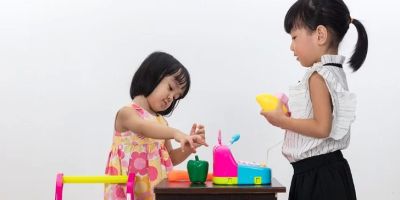Best Toy Instruments for Young Musicians: A Guide to Musical Development
When it comes to nurturing young musicians, there’s no better way to spark their interest in music than through engaging with toy instruments. These fun, playful tools not only provide an introduction to sounds and rhythms, but they also help build the foundation for future musical skills. In this guide, we’ll explore some of the best toy instruments for young musicians, why they’re valuable, and how they can help children develop a lifelong love for music.
1. Why Toy Instruments Are Great for Young Musicians
As a parent or educator, introducing children to music at an early age has numerous developmental benefits. From improving cognitive abilities to enhancing coordination and memory, music helps children grow in many ways. Toy instruments are perfect for young children because they are accessible, safe, and easy to use. They allow kids to experiment with sounds, discover different tones, and begin understanding the basics of rhythm and melody—all in a fun and interactive way.
For example, my nephew, who is just four years old, received a small xylophone for his birthday. At first, he was only fascinated by the bright colors and the ability to make noise. But as we played together, I noticed that he started to mimic rhythms and even attempted to play simple songs. It was incredible to watch his face light up with each new sound, and this small toy instrument laid the groundwork for his love of music.
2. Top Toy Instruments for Young Musicians
Now that we understand why these instruments are so important, let’s dive into the best options available for young musicians. Whether you’re shopping for a toddler or an older child, these toy instruments are sure to provide hours of entertainment and educational value:
- Wooden Xylophones: Xylophones are fantastic for young children as they help develop fine motor skills and introduce them to melody. The colorful keys also make the instrument visually appealing, and it’s an excellent choice for toddlers and preschoolers who are just beginning to explore music.
- Drums: Percussion instruments like drums can introduce children to rhythm and timing. From small hand drums to larger drum sets, they’re ideal for encouraging active play and boosting coordination. Many drum sets are designed for young kids, with soft mallets and durable materials that ensure safety during play.
- Maracas: Maracas are an easy-to-hold percussion instrument that children can shake to produce sound. They’re great for developing a child’s sense of rhythm, and because they come in many fun shapes and sizes, kids often enjoy shaking them in different ways to create new sounds.
- Mini Keyboards: A mini keyboard or small piano can help children begin to understand melody and harmony. Many toy keyboards have pre-programmed songs and lights that guide children through learning simple tunes, offering an interactive and entertaining introduction to keyboard music.
- Guitars: Toy guitars are an excellent introduction to stringed instruments. With smaller, child-friendly versions available, kids can learn basic chords, plucking techniques, and rhythm patterns. While these guitars are more about play than actual technique, they can still encourage an early interest in learning real guitar later on.
3. How Toy Instruments Help with Cognitive and Physical Development
Musical toys don’t just help kids have fun—they also contribute significantly to cognitive and physical development. Here are some of the ways that toy instruments benefit children:
- Improved Memory: Learning to play songs, even simple ones, enhances a child's memory and concentration. The repetition involved in playing an instrument can help children retain information better, which is beneficial for learning in all areas.
- Enhanced Coordination: Playing an instrument requires hand-eye coordination, which is a crucial skill for young children. Whether they're tapping on a drum or playing the keys of a xylophone, they’re improving their fine motor skills and learning how to control their movements.
- Increased Creativity: Engaging with music helps children explore their creativity. Whether they're inventing their own songs on a keyboard or creating rhythms with a drum, musical toys encourage them to think outside the box and experiment with sounds.
- Emotional Expression: Music has a profound effect on emotional development. Playing instruments allows children to express their feelings through sound, helping them process emotions in a healthy and productive way.
4. Finding the Best Toy Instruments for Your Young Musician
When shopping for toy instruments, it’s important to consider a few key factors to ensure that you’re choosing the right ones for your child’s age and developmental stage. Here are some tips to help you make the best choice:
- Age Appropriateness: Be sure to select instruments that are suitable for your child’s age. Younger children might prefer simple, durable instruments like tambourines or maracas, while older kids can begin experimenting with more complex instruments like keyboards or guitars.
- Quality and Durability: High-quality, non-toxic materials are essential when it comes to toys. Look for instruments made from safe, sturdy materials that will stand up to rough play and last longer.
- Interest and Engagement: Choose instruments that will keep your child engaged and excited to play. Consider their interests—if they love banging on pots and pans, a drum set might be perfect. If they enjoy making noise and experimenting with sounds, a xylophone or keyboard could be the ideal choice.
5. Real Stories: How Musical Toys Impacted My Child's Development
As a parent, I’ve witnessed firsthand how toy instruments can make a significant impact on a child’s development. When my daughter was young, she was always drawn to music. We bought her a small xylophone, and from the moment she started playing it, she was hooked. Her hand-eye coordination improved as she learned to strike the keys with the mallet, and soon, she was picking out simple songs by ear.
One of the most memorable moments was when she started making up her own tunes. It was as if the music unlocked a whole new world of creativity for her. These early experiences with toy instruments helped foster her interest in music, and today, she’s a young musician who plays several instruments. That small xylophone was the beginning of her musical journey, and it all started with a simple, fun toy.





